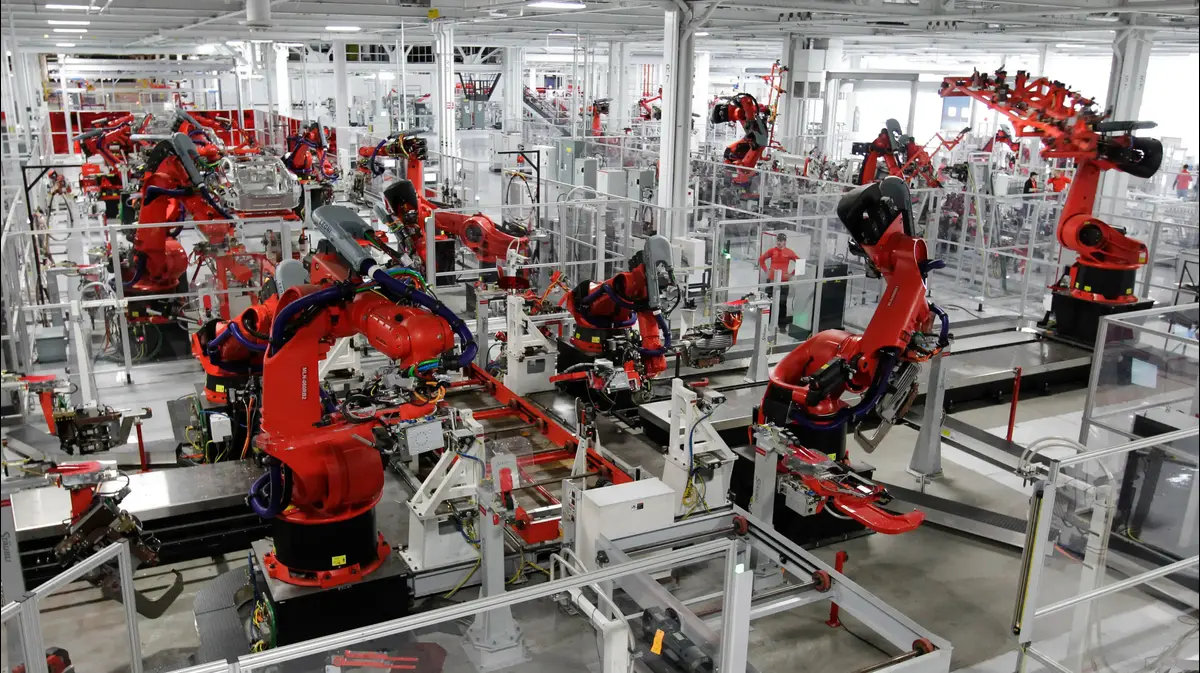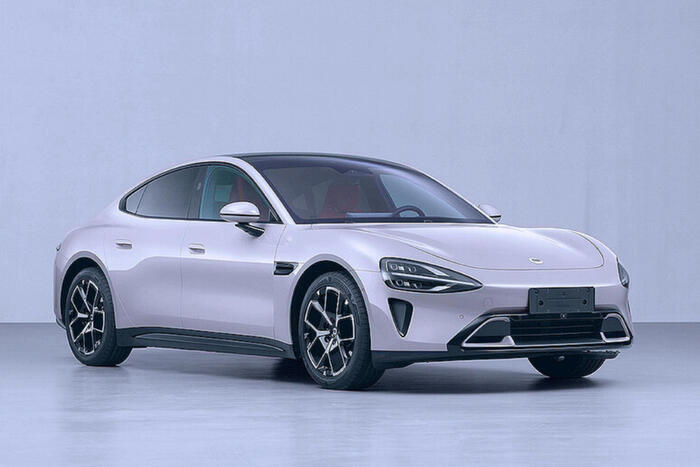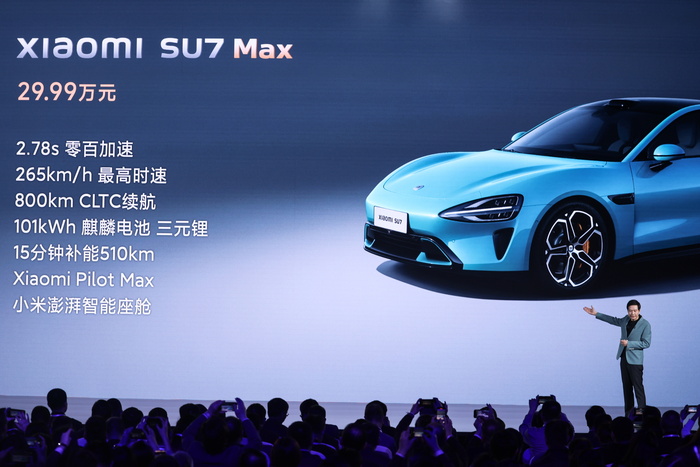Tesla's stock is already worth more than Volkswagen: Is it a bubble?
Electric car maker has set up factory in China, and Wall Street investors have jumped its value to more than $ 100 billion Those who believe in Tesla's future should know more closely the risks of the Chinese car market, which is under almost total government control
Last week, Tesla Motors shares hit a new record and jumped the company's value beyond the $ 100 billion mark, overtaking the Volkswagen Group on its way to second place in the global car manufacturers ranking. This "rally" can provide a fascinating topic for research in fields such as mass psychology, the impact of social networking on the capital market, the power of personality cult in the modern business world, media manipulation and more. But, it is doubtful that he has a logical or economic connection to vehicle production and marketing, which is the stated business area in which the company operates.
If we've already mentioned the Volkswagen Group, here are some enlightening figures. The 2019 Volkswagen Group finished with about 10.8 million new private car deliveries. That means Tesla's best year ever, which ended with about 375,000 sales, sold less than what the Volkswagen Group sold in two weeks.
Volkswagen posted EUR 14.8 billion in operating profit in the first three quarters of revenues of EUR 186 billion, while no one is willing to bet when and whether Tesla will reach annual profit. The Volkswagen Group has 122 manufacturing plants worldwide, compared to two for Tesla, and a dominant activity in the heavy vehicle market in the world, which is a significant source of profit. Its range of private car models is about 25 times larger than that of Tesla and is currently in the midst of a € 33 billion investment program aimed at reaching the rate of production and sale of about 3 million electric privacy a year by 2025. About 2.5 times Tesla's optimistic production forecasts for that year.
But why confuse the brain with data. Fact: Even after the company has achieved this weak market value, quite a few respected analysts continue to argue that its share is still far from reaching its potential. The main reason, which also fueled the current rally, is Tesla's potential in China's electric car market where the company operates from January with its own manufacturing plant.
We do not pretend to be financial analysts, nor are we experts in mass psychology, but we do know the Chinese car market quite well. It is therefore appropriate to present some warning signs regarding the obstacles facing Tesla in this market and its prospects for leveraging its success in a global leap.
Limited market potential
Undoubtedly, the flash process in which Tesla's new plant in China was set up and operational in just a year was an impressive industrial achievement. There is also no argument that the Chinese car market is still the hottest electric car market in the world, and despite the cooling down in 2019, the plant's opening today generates quite a bit of noise and positive sales sentiment in the Chinese market.
But when you put the buzz aside and start to get into the details, questions start to come. For starters, there is a tendency in the West to mix hybrid and plug-in sales in China with sales of "Net" (Battery Operated Vehicle or BEV acronyms) segment, the segment in which Tesla operates. In fact, the BEV market in China occupies a little less than 5% of all private car sales. Of which, Tesla sold in China last year, before the start of the new factory supply, around 42,000 vehicles, a share of about 13%.
Due to Tesla's Achilles in China, and not only that, the supply of models is limited. Its main model in China is the Tesla 3 sedan, which is currently sold for about $ 43,000 to the consumer after government subsidies, after the price was cut by 16% in early January to ease penetration.
While Tesla 3 is a talented car, acclaimed for its impressive driving range and a host of futuristic technologies. But the bottom line is that this is still a premium-market, mid-size, premium-market sedan dominated (43% last year) by crossover and leisure models. All kinds. Both in gasoline and electric vehicles.
Most direct competitors are larger, some are advanced, and they all offer a variety of versions with different-sized batteries that appeal to a wide range of prices - including base versions with a range of 300-350 miles at base prices in the $ 25,000 range after subsidies.
Tesla is supposed to partially close the gap with the future model Y, a kind of crossover based on the Tesla 3 rules, but beyond the fact that this model has not yet passed its marketing fire baptism, many believe it will create internal marketing competition for the sedan and most of its sales will come On the inside and not the competitors. Recall, even when the Chinese plant reaches its declared peak output, at around 8,000 cars a month in the second phase, the numbers will still be significantly lower than those of some domestic competitors.
Deep government involvement
Another basic point to remember is that the Chinese car market as a whole, and the electric car segment in China in particular, are far from the definition of an elaborate market. The central communist government controls both the demand side of the automobile market and the supply side of resolutions that are unknown in the West.
The demand for electric vehicles in China is substantially based on green government subsidies, which at their peak reached about 20% of the consumer price. As sales grew, so did the economic burden of subsidies and as a result in 2019, the Chinese government began to implement a two-year plan aimed at eliminating subsidies on electric vehicles altogether. In the first phase, the subsidy was cut in half around April 2019 and the result was a rapid fall in demand for electric vehicles, with a 7% decrease in annual sales.
That dependency is a global phenomenon and should go as far as China to realize how critical it is - suffice it to mention the cool reception Israel made to Tesla by reducing the benefits for electric vehicles in January 2020, at which time the company's vehicles are expected to cost tens of thousands of shekels.
On the supply side, not only is the Chinese government regulating production volumes for electric vehicles, up to the factory level and model, through production licenses, but the government itself also owns a large portion of the major Chinese car manufacturers, leading the overall automotive market and electric segment in particular.
The government of China is investing tens or billions of dollars directly or indirectly in these companies, and if Tesla poses a major threat to domestic players in China's electric car market - as analysts now predict its share - it will cross a red line. Even if its vehicles are manufactured in a Chinese factory for glory.
The Chinese government has a host of other political mechanisms for influencing the market, such as local government committees in various provinces and control over media and public opinion.
The power of these patriotic mechanisms must not be underestimated: When South Korea entered into a political dispute with China in 2017 only to place the THAAD missile defense system in its territory, China's demand for Korean brands, including those made in China, was dramatically cut and has not yet recovered. Last year, as a result of the trade war with the United States, the demand for American-branded vehicles, most of which are manufactured in China, dropped by 40-60%.
Maybe it's just a coincidence, but in recent days major media outlets have begun to extensively survey workers' claims at California's Tesla factory for rights deprivation and "hunger wages." This may just be the beginning of an anti-image campaign.
Recall also that the Tesla plant was set up with a $ 1.4 billion loan from a Chinese consortium of banks, and that the government has the ability to influence the flexibility of the banking system with regard to repayment terms - if such flexibility is required in the future.
Despite all the odds?
It is impossible not to mention in conclusion the general limitations of the electric vehicle, which are characteristic of a market that is in the ropes, and with which electric vehicles are currently faced all over the world. This is a critical dependency on the pace and spread of retirement of home and public charging infrastructure, most of which still require a deep government subsidy; Or the load that generates vehicle masses charging on public electricity grids; Or the accelerated travel-time obsolescence provided by the electric vehicle battery under a frequent "fast charging" regime; Or the difficulty of manufacturers to make significant profitability in light of high battery prices and so on.
Bottom line, we will call us skeptics but a $ 100 billion cap for a young carmaker, featuring three and a half models with Yanuka technology, holding two manufacturing plants - one running - and hauling billions of accumulated losses of billions, reminding us of a host of speculative financial bubbles that have faded away Between pages of history.
On the other hand, this week we read a review by a great and respected analyst who demonstrated in the signals and exemplars that Tesla never claimed that gaining profitability is one of its business goals. According to him, she claims to be honoring all her stated goals and deserves a "strong buy" recommendation.
Good to Know (Promoted Content) Good to Know (Promoted Content)70,000 people are not mistaken: this is how the knee or back pain is treated
Apothecary
To the full article








